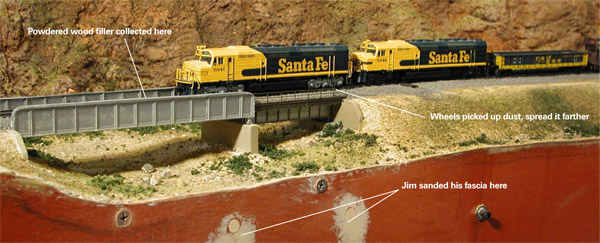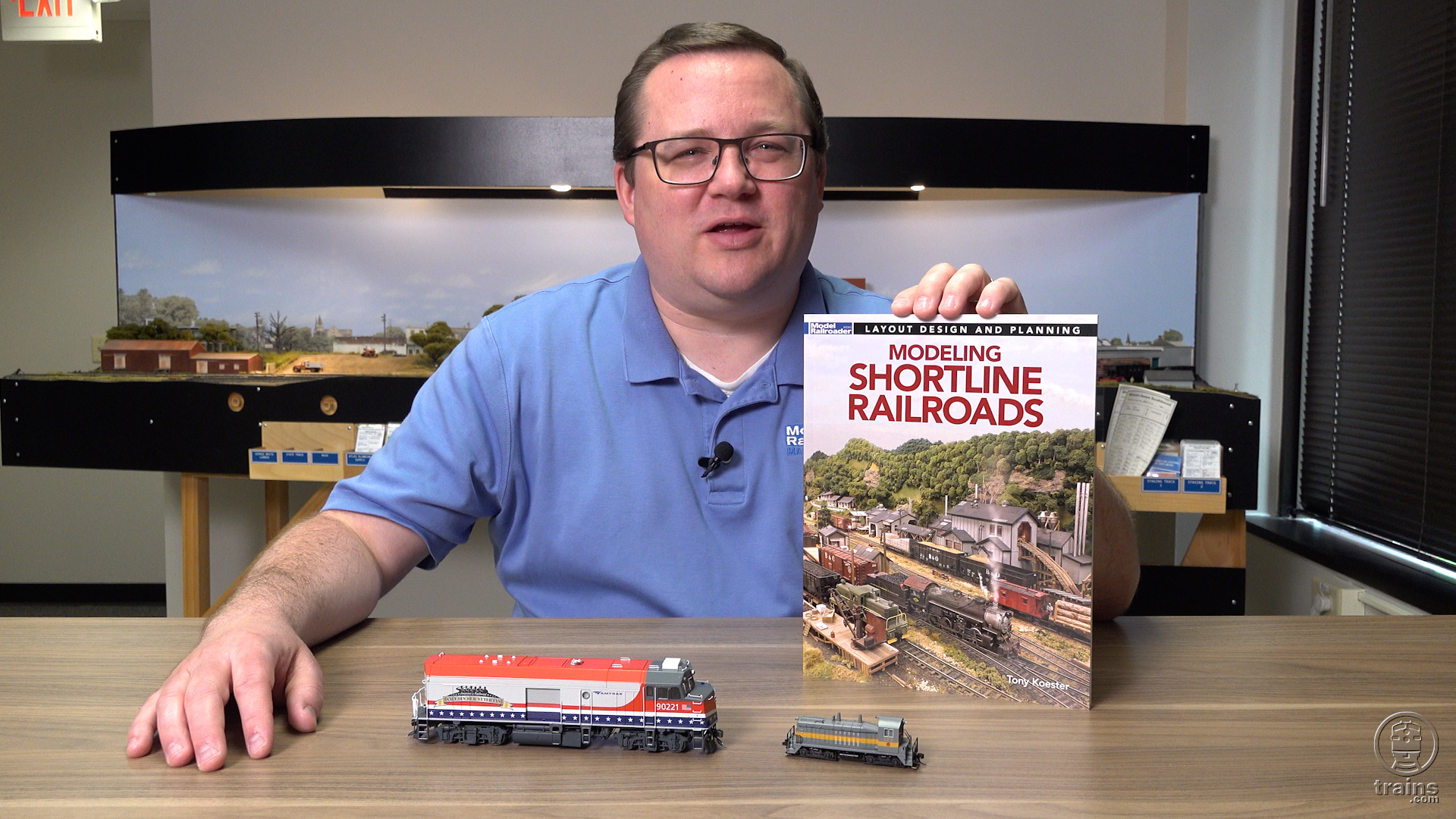
The two Athearn FP45s ascended the helix effortlessly with a 20-car freight in tow, cruised through the town of Tehachapi (or at least the stretch of plywood where Tehachapi will go), drifted down through the Tehachapi Loop, on through Caliente, and into “The Narrows,” the newly completed portion of the layout where the railroad follows Caliente Creek through a tight notch in the mountains.
Suddenly the locomotives screamed as if they were tearing themselves to pieces, locked up, and went totally dead. I literally felt ill. These engines had cost twice what I was accustomed to paying, because they were factory-equipped with SoundTraxx sound decoders.
Although they had quickly become favorites, I hadn’t run these engines much, and now here they were giving out. I had never seen a locomotive behave this way and was expecting to pull off the body shells and find scorched remnants of what had once been motors and gears.
Instead, the problem turned out to be, as it so often does, dirty track. Those “small chores” that I mentioned in the opening paragraph had included sanding a small area on the fascia where I had removed some pushbuttons and filled the resulting holes with wood filler. It’s a small area, and sanding it smooth probably took less than a minute. That little cloud of filler dust, though, had wreaked all the havoc I have just described.
But even after taking a Bright Boy to my track yet again, I could still get only a feeble response from the engines. I had to clean the wheels.
Like many other modelers, I do this by dampening a small area on a paper towel with denatured alcohol, laying that wet towel on the track, and using the power provided by one truck on the rails to power the other resting on the towel. The black streaks of dirt that come off wheels you didn’t think looked dirty can be amazing. In this case, it took several rounds of such cleaning to nurse those FP45s back to health.
This episode reinforced a few of my model railroading rules to live by:
- Always clean the track anytime you’ve been working on the railroad, and especially if you’ve been building scenery, with its associated grit and glues.
- Always clean track anytime you haven’t run trains for a month or more.
- Corollary to the above: Cleaning
N scale track is a heck of a lot easier than cleaning N scale wheels.
As long as I’m on the subject of wheel-cleaning, on several occasions I’ve experienced this bewildering situation: I’ve cleaned the wheels, the engine is running fine, but when I come back later the engine is acting up again. The only apparent solution is to clean the wheels again – and yet again if (when) the problem reoccurs.
My theory on this is that the denatured alcohol dissolves most of the problem dirt, but leaves a thin film on the wheels. Once that film dries, the electrical pick-up problems return. I think this happens only if you’ve picked up particularly nasty stuff, such as paint, soldering flux, or whatever you use to bond ballast.
One last observation: Keeping track clean is even more important in N scale, with its short wheelbases and light equipment. When you clean track after you’ve painted it or worked on the scenery anywhere near it, you need to go after that track gunk hard. The track can still be dirty, even if it looks perfectly clean. You don’t really know until you see a locomotive run through it without a hitch. Until then, keep on cleaning.
For N scale product reviews, track plans, and videos, visit the Model Railroader N scale page.














i usually try to run my trains a couple of times a week with the cleaning cars pushed in front of the engines. That way most of the dirt will be removed before it hits the locos. It works well.
This may not be the recommended method, but I read elsewhere that wiping some automatic transmission fluid on the rails will clean them and keep them clean. I've tried it and it works!